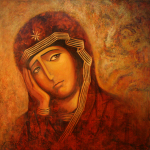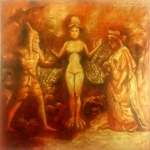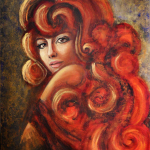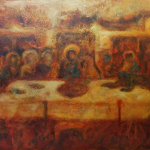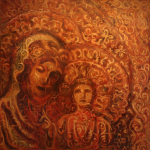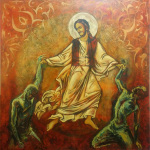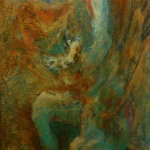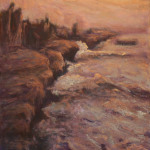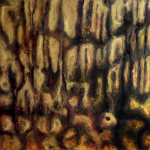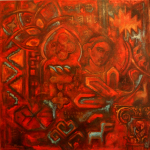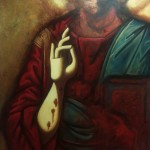March 15, 2015
Paintings Remember Art Destroyed In Syria

Burden
In late February, Turkey conducted its largest intervention in Syria to rescue the remains of Suleyman Shah, the grandfather of the Ottoman Empire. While Shah’s tomb was guarded throughout the Syrian Civil War, it was destroyed by Turkish military after Shah’s remains were collected to prevent it from falling into the hands of the Islamic State group.
Many historical relics have become casualties during Syria’s civil war. In Syria’s central region, the ruins of Palmyra, an ancient oasis, were damaged by mortars and shelling. Some of the oldest cities in the world, like Aleppo, have suffered extensive damage.
The tomb acquisition was the source of political contention between Turkey and Syria but Turkey’s Prime Minister Ahmet Davutoglu said that in order to protect the nation’s historical relics, “it was necessary to take measures because of the increased clashes and increasing tension in Syria.”
For D.C.-based Syrian artist Essa Neima, who teaches art at the University of the District of Columbia, the weight of this conflict is heavy. His latest collection draws from his desire to uphold others and their artwork despite political or religious boundaries.
“In general, I would like to talk through my art about respecting others, by respecting them as a person and respecting their belongings, regardless what religion they belong to,” Neima said on Hear & Now.
Neima will appear on The Kojo Nnamdi Show Monday, March 16 in the first hour. His exhibit, “Touch Me Not,” is showing at Church of the Pilgrims in Washington, D.C. until April 5 on Sundays from 12 to 2 p.m. and the first Friday of the month from 6 to 8 p.m. Additional viewings can be made by appointment.
- Burden
- Anat Ends The War
- Forced Freedom
- Out of Focus
- Syrian Iconoclasm
- Rachel’s Tears
- The Truth and The Life
- Blue Forgiveness
- Waiting For
- The Chasm
- Carpet of Martyrs
- The Fifth Crucifiction



